For foreigners, just living in Japan can be a daunting task. When it comes to a hospital, some people may be full of things they don’t understand.
In this article, we will introduce how to see a doctor in Japan. We also show examples of multi-lingual hospitals and how to find a hospital for you.
Sudden injuries or illnesses can lead you to the hospital, so make sure you have the information you need so that you can reach medical supports anytime.
How to See a Doctor in Japan
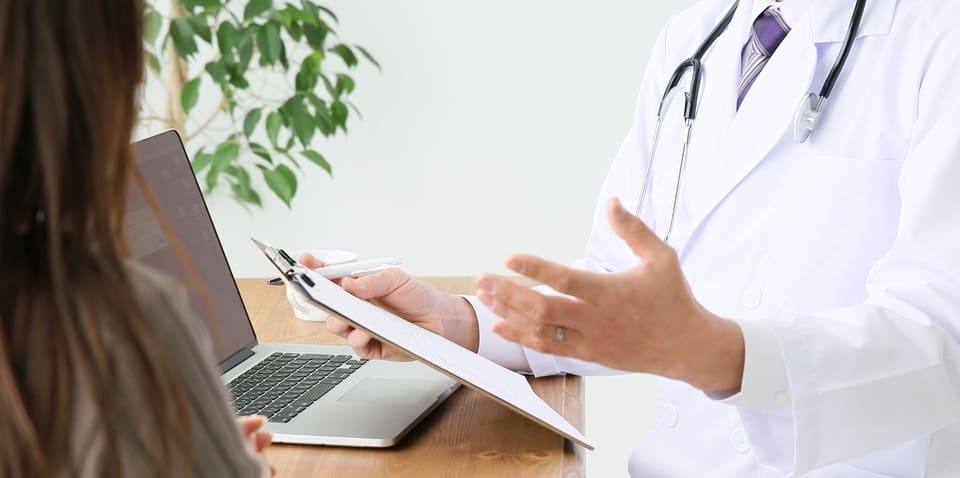
We will explain the general procedures for consultation at Japanese hospitals. Besides, we will also explain the points to take when visiting a Japanese hospital, such as necessary items, first visit fee, and “fee for treatment of patients’ choice.”
From Reservation to Reception
When visiting a hospital, make an appointment first. Some hospitals will not be able to see you without a reservation, so it is necessary to check in advance.
There are some hospitals where you can see a doctor without a reservation, but in that case, there is a high possibility that you need to wait for a long time. The reservation method depends on the hospital, but in most cases, it is by telephone or internet. For details, check the website of each hospital.
Once you have made a reservation, go to the hospital on the reserved date and time. When you arrive at the hospital, tell the receptionist that you are making a reservation (if not, tell them so). After that, the receptionist will ask you to present a patient registration card and health insurance card, so show them.
For more information about Japanese health insurance, please see this article.
After the reception, wait in the waiting space until your turn to visit. In the case of your first visit, you often need to fill in your symptoms and reasons for your visit on a medical questionnaire, and you may also need to take your body temperature.
If you are not confident in your Japanese, it is convenient to write down your symptoms on a memo in advance. Mainly taking notes about the following points will help you fill out the medical questionnaire.
- Allergy history
- Current physical condition and symptoms
- Medical history
- Current medication
Things to Bring
Take the following with you when you go to the hospital:
- Health insurance card
- Patient registration card
- Booking slip (if any)
- Referral letter (if any)
You need to present your health insurance card when you visit the hospital for the first time, or when you see your doctor after the month changes. This will reduce your medical expenses.
As for the patient registration card, you will get it when you visit the hospital for the first time. please bring it with you when you visit there again.
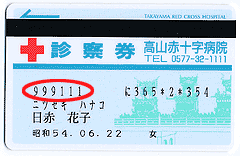
Source:Takayama Red Cross Hospital Official Website
Medical Examination
When a doctor or a nurse calls your name, you will enter the examination room and have a consultation by the doctor. During the examination, the doctor will ask you about your physical condition and symptoms.
After that, depending on the symptoms, the doctor will check for your part that has pain or a rash. As you may take off or lift your clothes as needed, it is convenient to wear clothes that are easy to take off and put on.
Depending on the case, you may need to take tests such as a blood test, an X-ray test, and an MRI examination. In that case, follow the guidance of your doctor or nurse.
If the doctor prescribes a medicine for you, he/she will explain what kind of medication it is.
Payment
After the consultation, return to the waiting space again. When your name is called, please go to the counter for the payment.
If you need your next visit, make an appointment here.
Getting Your Medicine
If you are prescribed medicine, you will get a prescription at the reception at the time of payment, so take it to the pharmacy.
When you enter the pharmacy, please present your prescription and health insurance card at the reception desk. If you have a medicine notebook, please show it as well.
When the staff calls your name, please receive your medicine and make a payment at the counter.
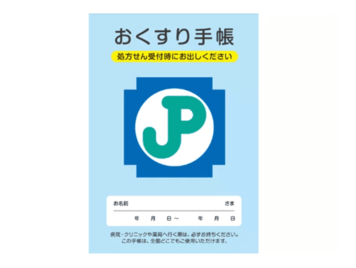
Source: NIHON CHOUZAI Official Website
At the time you receive the medicine, the pharmacist will instruct how to take it and how often you will take it.
About “First Visit Fee”
What you should keep in mind when visiting a Japanese hospital is the existence of a “first visit fee” and a “subsequent visit fee.” In Japan, using a hospital incurs either of them. These are medical fees determined by the medical fee system.
When you go to a hospital for the first time, the fee will be higher. If you visit the same hospital again due to the same illness, it will be cheaper. The subsequent visit fee is lower than the first visit fee.
Therefore, keep in mind that it costs a bit more to visit a hospital for the first time.
About “Fee for Treatment of Patients’ Choice”
What you should keep in mind together with the first visit fee is the “fee for treatment of patients’ choice.” This is a system that aims to role-sharing of medical institutions. At the time of the first visit to a large hospital, additional costs will be incurred if there is no referral letter from another hospital or clinic.
The specific amount is ¥ 5,000 or more at the first visit and ¥ 2,500 or more at the subsequent.
Please note that not all hospitals incur the “fee for treatment of patients’ choice,” but it is mainly required when visiting hospitals with 200 or more beds. When visiting a small clinic in the city, you don’t have to worry about it.
Terms Related to Hospital
Here is a list of the Japanese words often used in hospitals and their meanings. Please use it as a reference when receiving medical examination.
Medical Departments
| Japanese | Pronunciation | English |
|---|---|---|
| 内科 | Naika | Internal medicine |
| 外科 | Geka | Surgery |
| 整形外科 | Seikeigeka | Orthopedics |
| 小児科 | Shōnika | Pediatrics |
| 耳鼻咽喉科 | Jibiinkōka | Otolaryngology |
| 皮膚科 | Hifuka | Dermatology |
| 脳神経外科 | Nōshinkei-geka | Neurosurgery |
| 精神科 | Seishinka | Psychiatry |
| 産婦人科 | Sanfujinka | Obstetrics and Gynecology |
| 泌尿器科 | Hinyōkika | Urology |
| 眼科 | Ganka | Ophthalmology |
Illnesses and Injuries
| Japanese | Pronunciation | English |
|---|---|---|
| 風邪 | Kaze | Cold |
| インフルエンザ | Infuruenza | Influenza |
| 胃腸炎 | Ichō-en | Gastroenteritis |
| 骨折 | Kossetsu | Fracture |
| 捻挫 | Nenza | Sprain |
| 肺炎 | Haien | Pneumonia |
| 糖尿病 | Tōnyō-byō | Diabetes |
| がん | Gan | Cancer |
| 栄養失調 | Eiyōshitchō | Malnutrition |
| 過労 | Karō | Overwork |
Frequently Used Phrases
| Japanese | Pronunciation | English |
|---|---|---|
| 本日はどうされましたか? | Honjitsu wa dō saremashita ka? | How can I help you? |
| 症状はいつから出ていますか? | Shōjō wa itsu kara dete imasu ka? | When did the symptoms start? |
| 診察券はお持ちですか? | Shinsatsu-ken wa o mochidesu ka? | Do you have a patient registration card? |
| 保険証はお持ちですか? | Hoken-shō wa o mochidesu ka? | Do you have an insurance card? |
| 処方箋を出しますね。 | Shohōsen o dashimasu ne. | I will prescribe some medicine for you. |
| 血液検査を受けてください。 | Ketsueki kensa o ukete kudasai. | Please take a blood test. |
| レントゲンを撮ります。 | Rentogen o torimasu. | We will take an X-ray of you. |
| 心臓の音を聞かせてください。 | Shinzō no oto o kika sete kudasai. | Please let me detect your heart sounds. |
Examples of Hospitals Which Support Foreign Languages
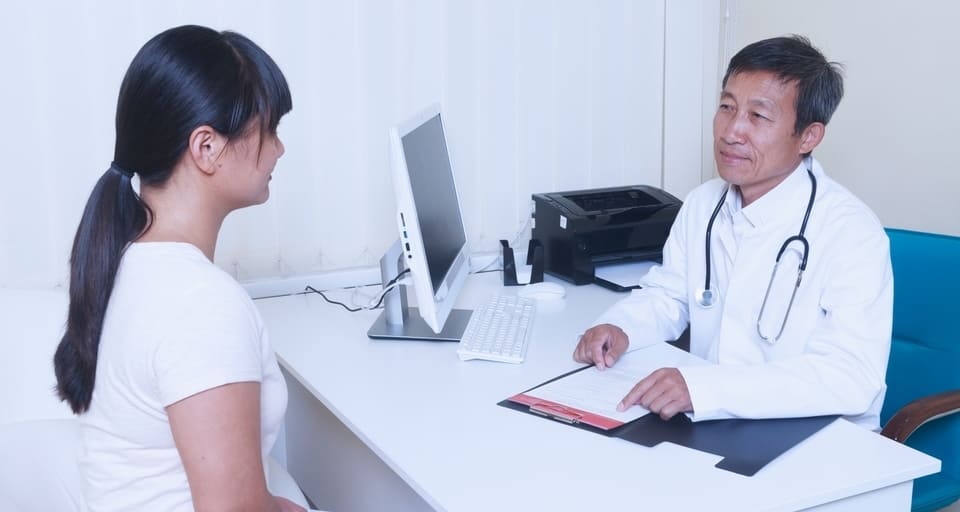
Here, we will introduce three hospitals that support foreign languages. Please refer to the basic information such as the consultation department, outpatient reception hours, and supported languages.
If you actually visit the hospital, check the website of each hospital for the latest information.
Tokyo Metropolitan Cancer and Infectious Diseases Center Komagome Hospital
| Departments | Emergency department, internal medicine, surgery, pediatrics, psychiatry, dermatology, neurosurgery, urology, orthopedics, ophthalmology, otolaryngology, obstetrics, gynecology, dentistry |
| Outpatient reception hours | Monday – Friday 9:00-17:00 Saturday 9:00-12:00 (emergency outpatient is available 24 hours a day) |
| Supported languages | English, Chinese, Korean, Russian, Thai, Vietnamese, Spanish, Portuguese, French, Tagalog |
| Address | 〒113-8677 3-18-22 Honkomagome, Bunkyo-ku, Tokyo |
| TEL | 03-3823-2101 |
| Website | http://www.cick.jp/english/ |
Nagoya Kyoritsu Hospital
| Departments | Emergency department, internal medicine, surgery, neurosurgery, etc. |
| Outpatient reception hours | Monday – Friday 9:00-17:30 (advance reservation required) |
| Supported languages | English, Chinese |
| Address | 〒454-0933 172 Hokke 1-chome, Nakagawa-ku, Nagoya City, Aichi |
| TEL | 052-362-5151 |
| Website | https://www.kaikou.or.jp/kyouritsu/en/index.html |
Nippon Life Hospital
| Departments | Internal medicine, surgery, obstetrics, gynecology, pediatrics, orthopedics, dermatology, urology, ophthalmology, otolaryngology, emergency department, etc. |
| Outpatient reception hours | Monday – Friday 8:30-11:30、13:00-15:30 |
| Supported languages | English, Chinese |
| Address | 〒550-0006 2-1-54 Enokojima, Nishi-ku, Osaka City, Osaka |
| TEL | 06-6443-3446 |
| Website | https://www.nissay-hp.or.jp/en/ |
Services to Search for Hospitals Which Support Foreign Languages
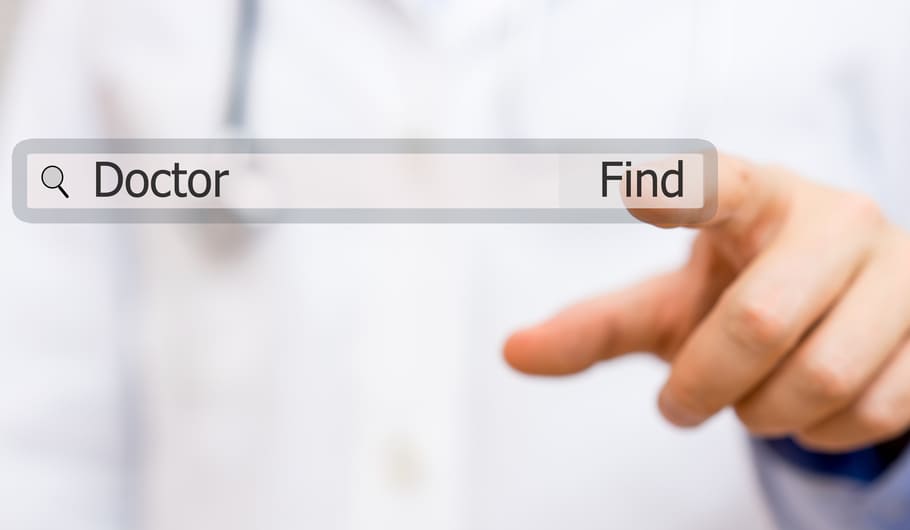
If you are looking for a hospital that supports foreign languages in your area, here are some services that allow foreigners to find medical institutions in a foreign language.
Japan National Tourism Organization Website
The Japan National Tourism Organization provides a website where you can search for medical institutions. It supports Japanese, English, Chinese, and Korean, so you can search for medical institutions and check how to use them.
Japan Medical Education Foundation
On the website of the Japan Medical Education Foundation, you can search for accredited medical institutions accepting international patients. This supports several languages, including English and Chinese.
JAPAN Hospital Guide
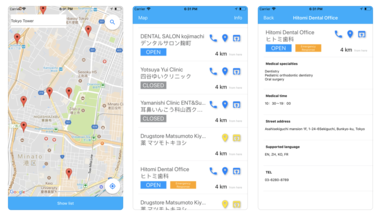
JAPAN Hospital Guide is an app for smartphones that allows you to search for medical institutions that support foreigners. It works in conjunction with GPS and displays medical institutions near your current location.
Services Provided by Prefectures
Some prefectures have websites that provide information on medical institutions.
For example, “Himawari” by Tokyo provides various information such as how to find a medical institution, types of them, and how to see a doctor. Supported languages are Japanese, English, Chinese, and Korean.
Also, there are websites in Aichi and Osaka that support searching for hospitals in the area. When you live or visit Aichi or Osaka, it is convenient to bookmark it.
Conclusion
This time, we have explained how to see a doctor and how to find a hospital that supports foreign languages.
Although it is not difficult to visit a hospital itself, it is good to know in advance about health insurance and the “fee for treatment of patients’ choice.”.
Also, if you are not confident about telling your symptoms on the spot, we recommend that you prepare a memo beforehand.
You don’t know when an illness or injury will strike, so pick up some hospitals when you’re doing well so that you can visit there smoothly in case of emergency.



